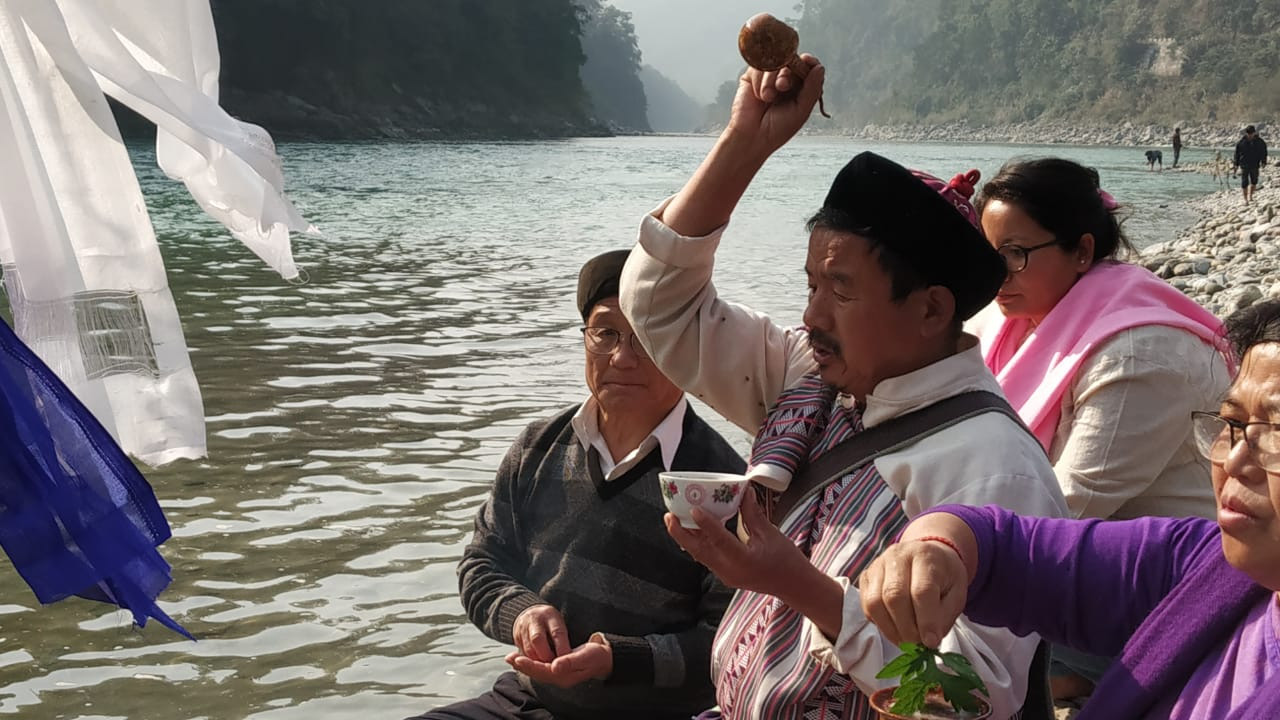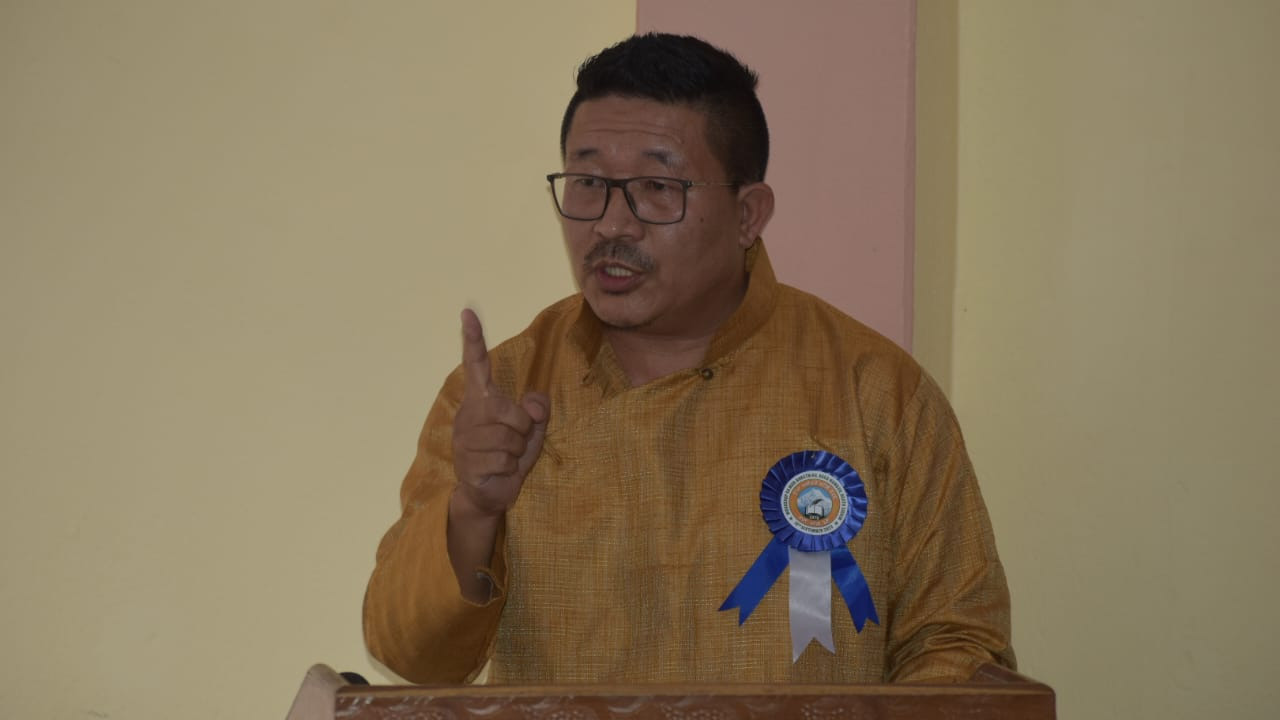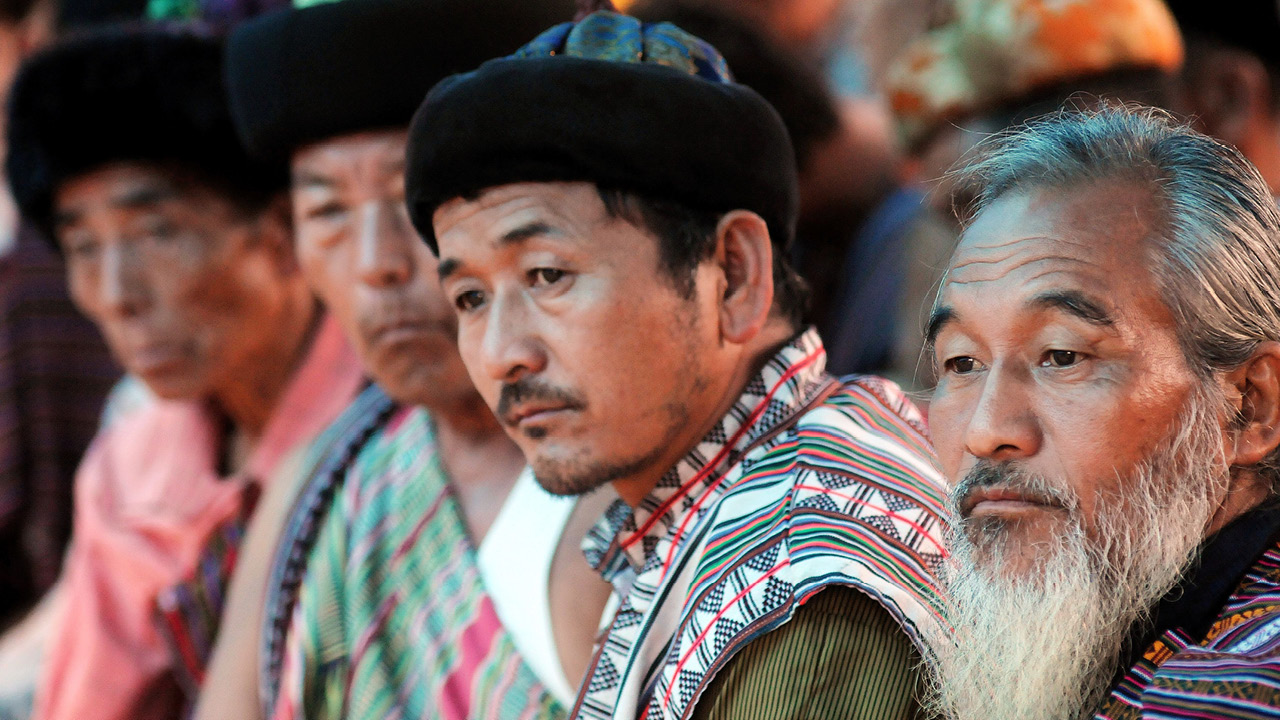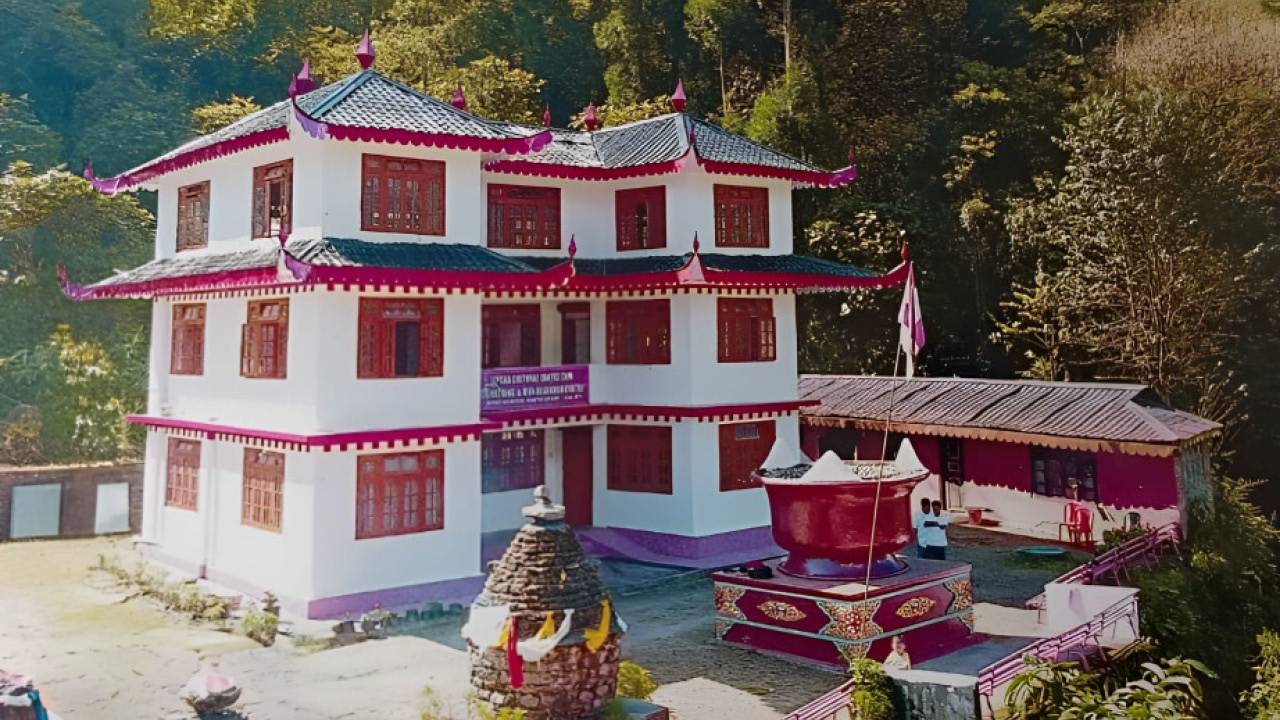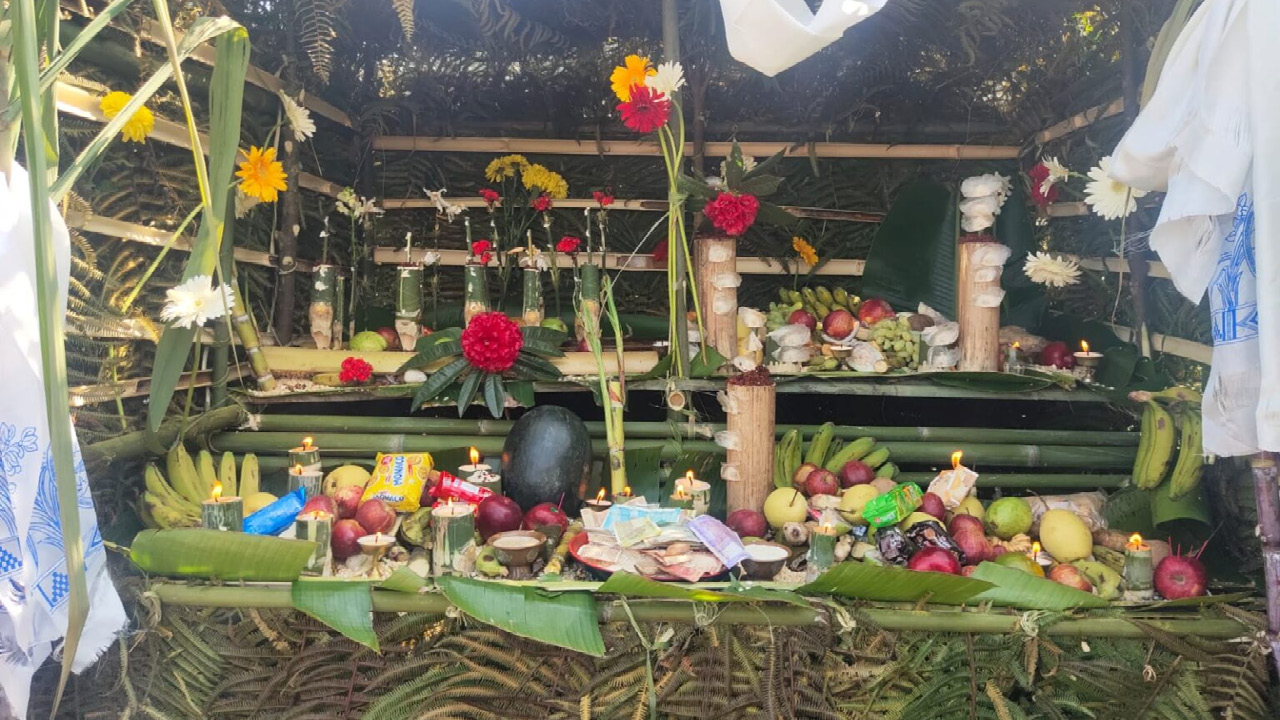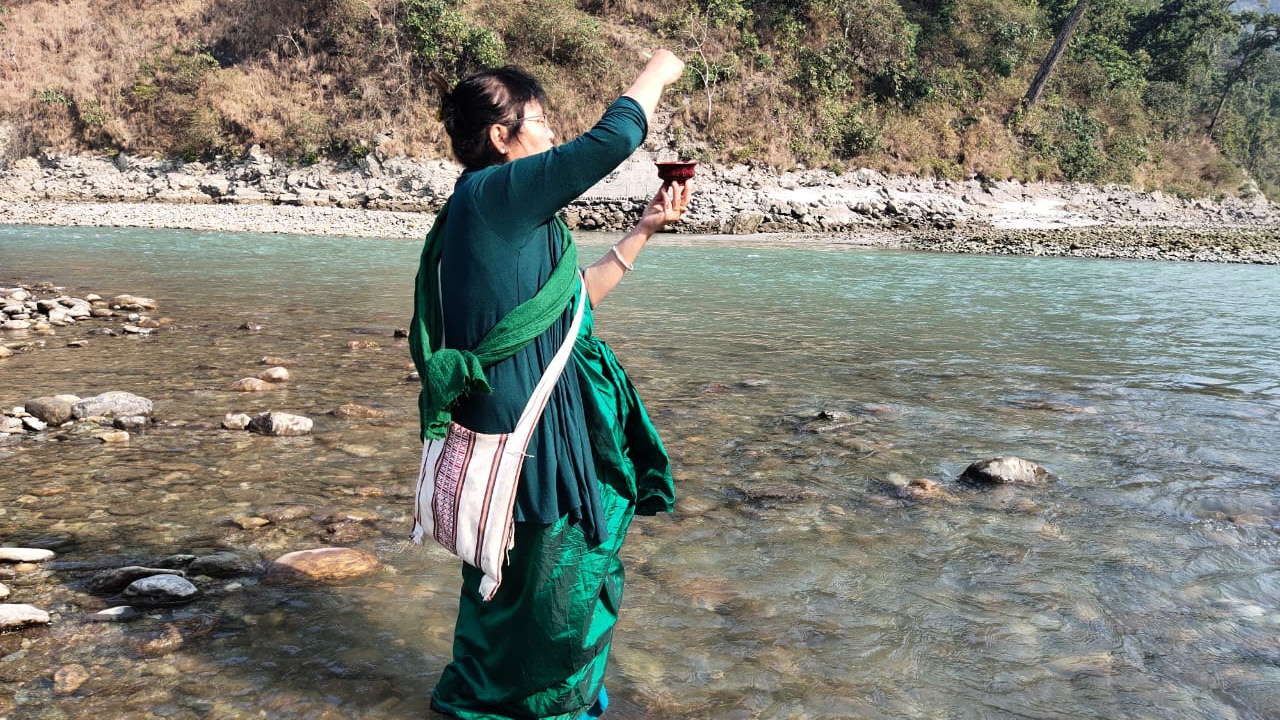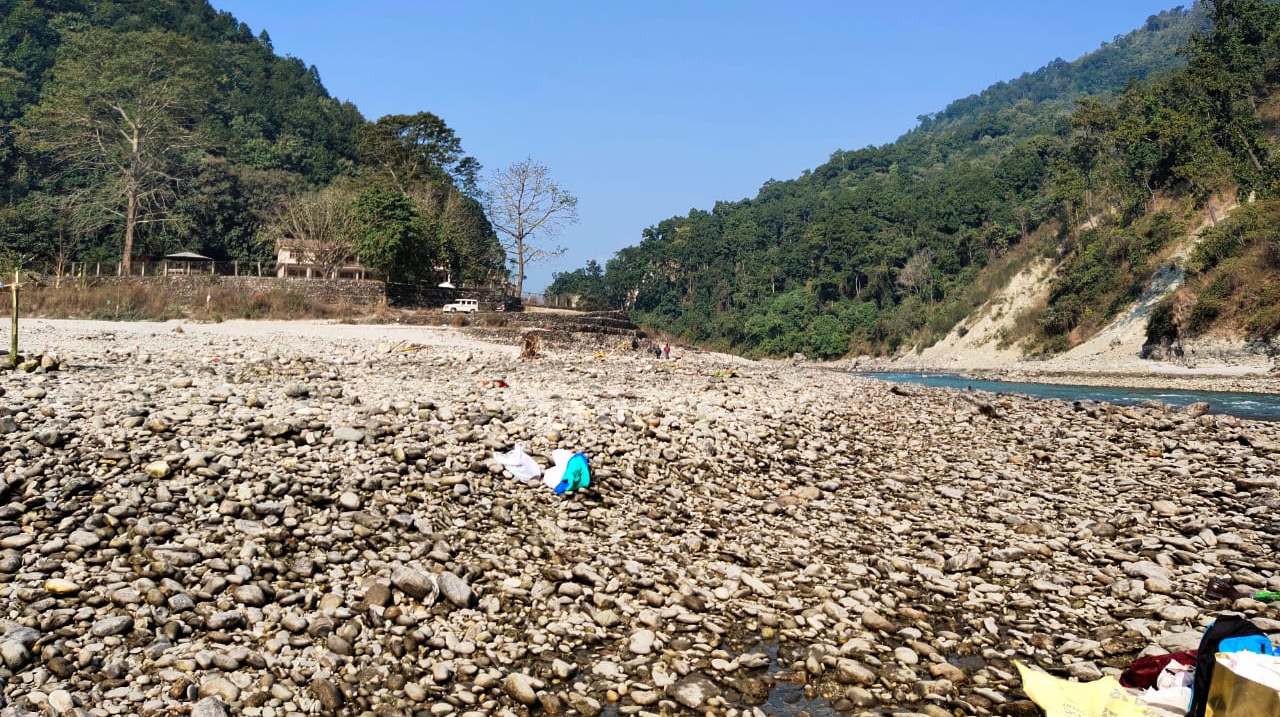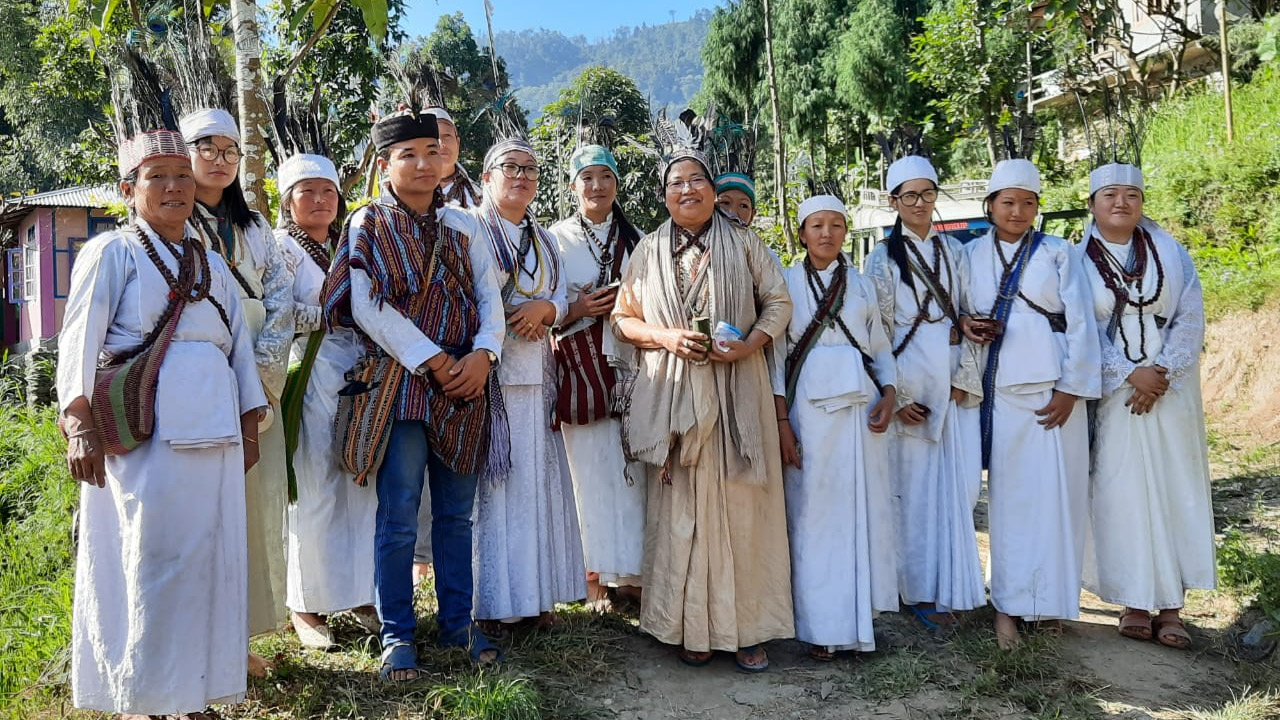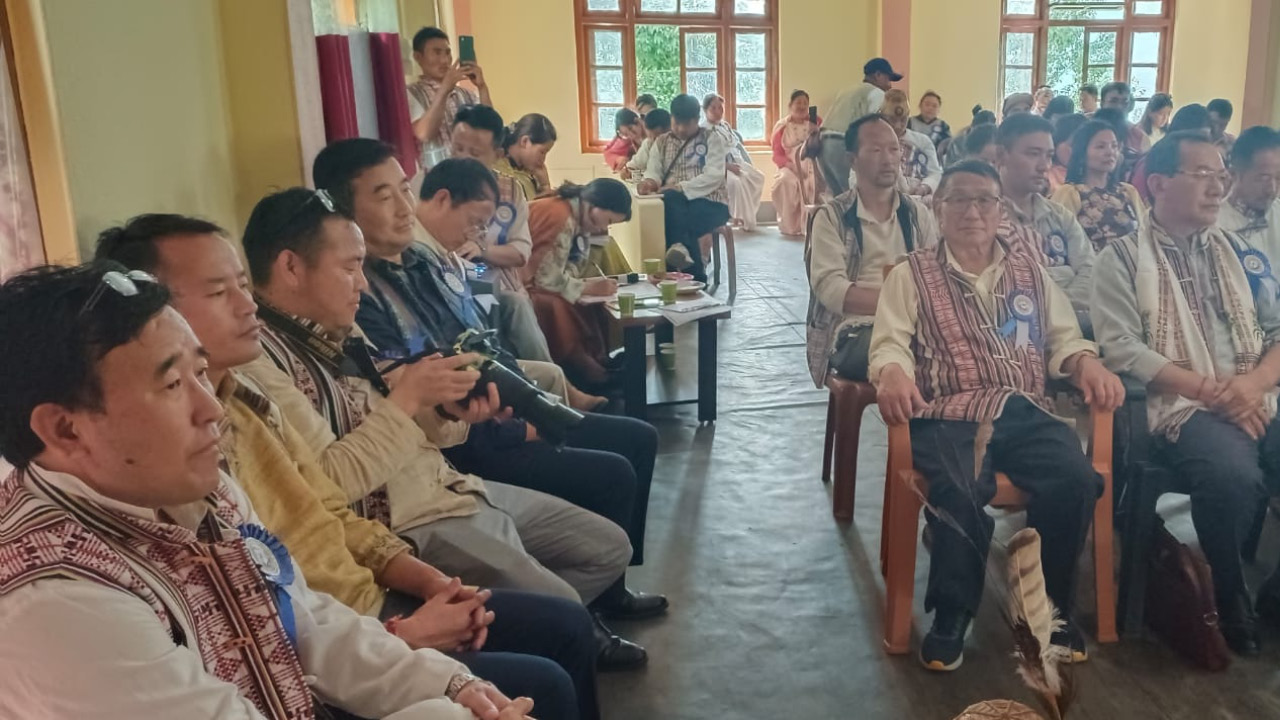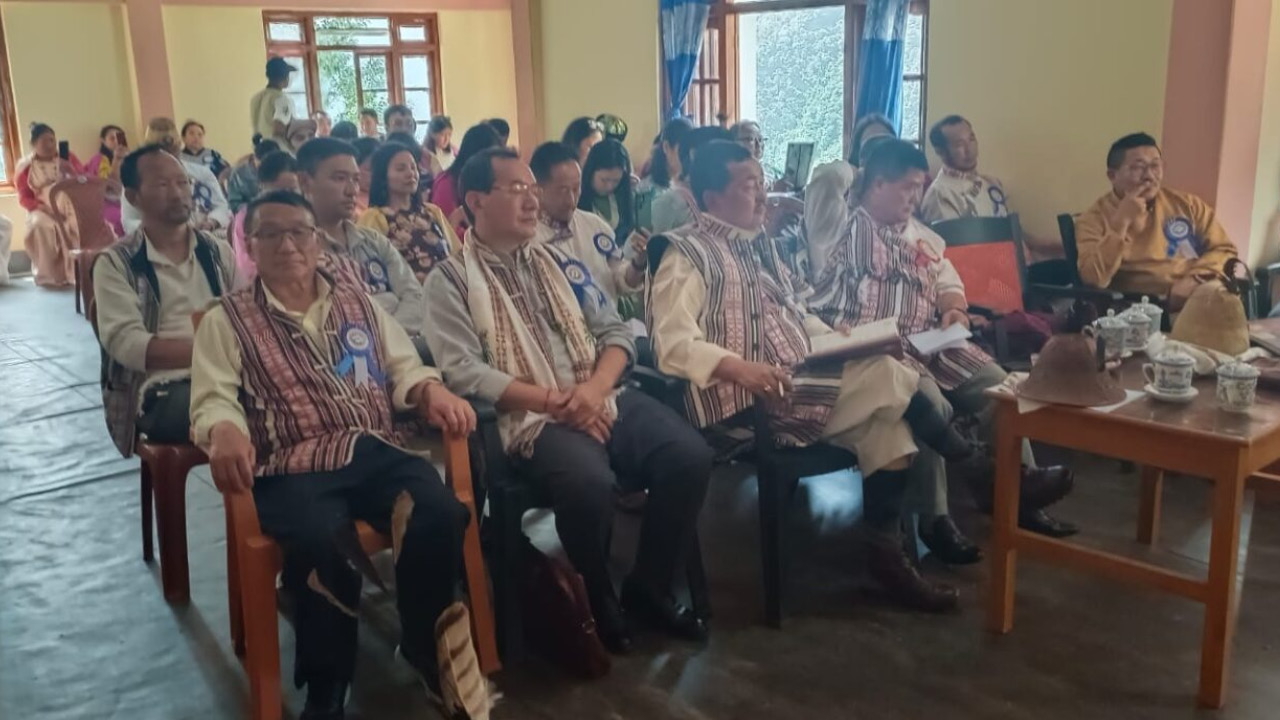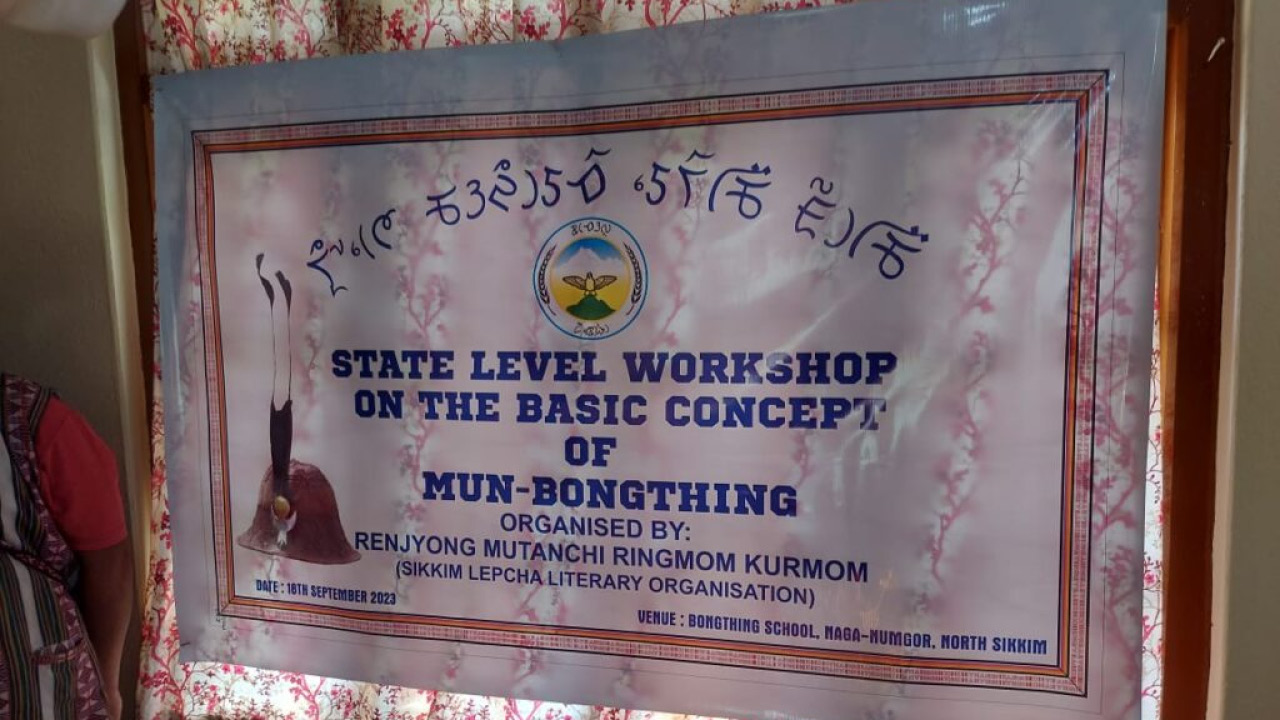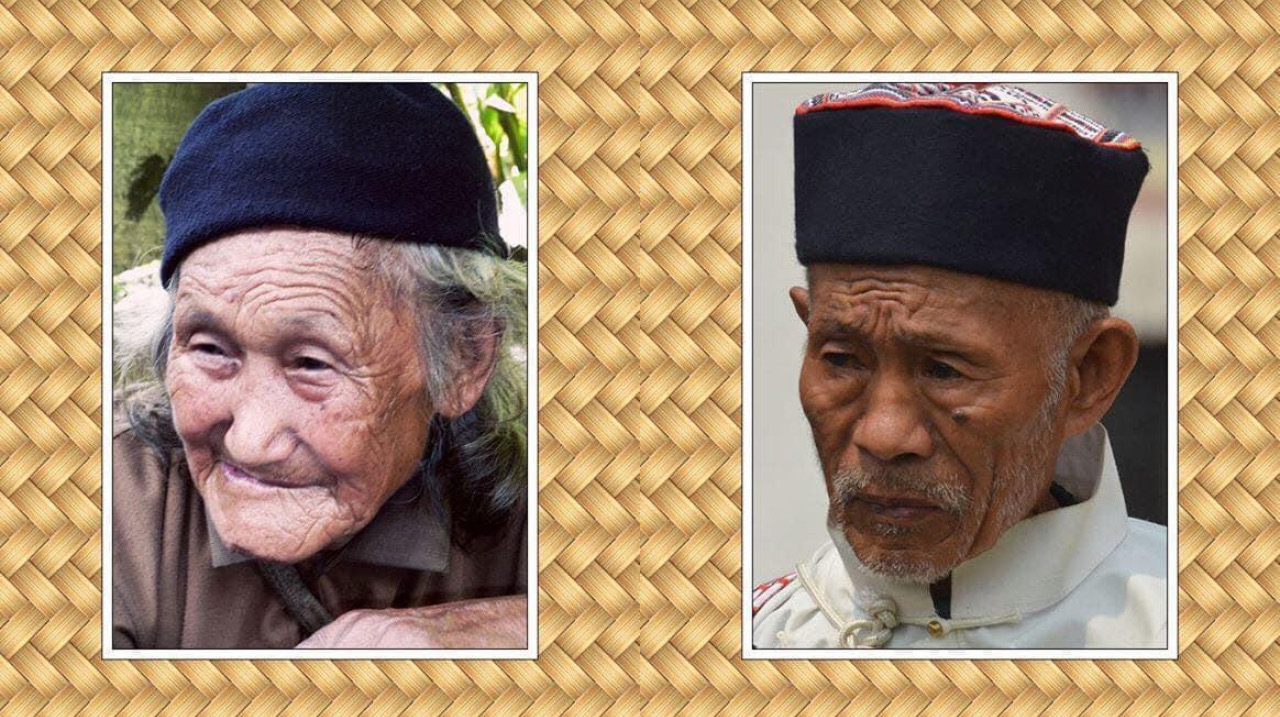Preserving Bamboo and Cane Crafts: Indigenous Traditional Knowledge Custodian, Lepcha Bongthing, Gangtok
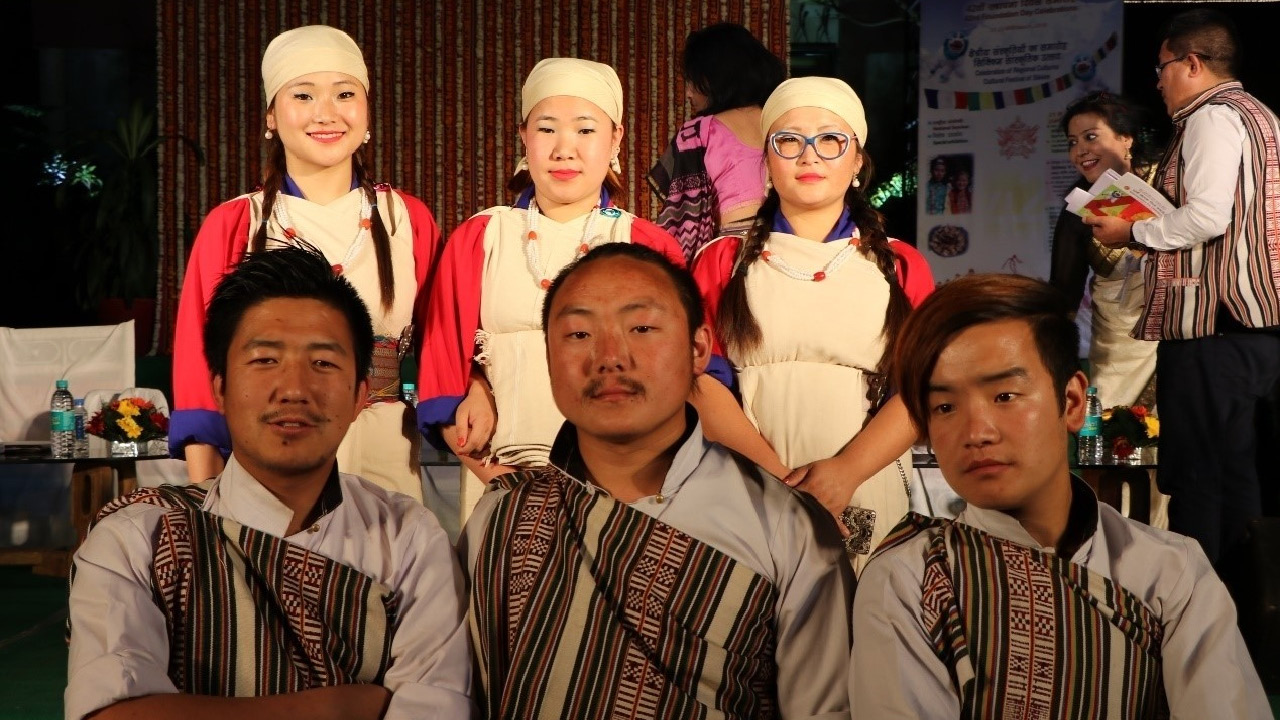
Preserving Bamboo and Cane Crafts, Indigenous Traditional Knowledge Custodian, Lepcha Bongthing, Gangtok
Problem
- Dying bamboo and cane crafts
- Preservation of Traditional Artistry
- Lack of appeal in traditional products
- Economic Empowerment of Tribes
- Sustainability and Environmental Impact
- Market Access and Exposure
- Limited Market Access
- Technological Barriers
Solution
- Introduction of the skill enhancement programme
- Digital marketing and e-commerce
- Revival of traditional designs
- Providing market linkages
- Launch of promotion activities
- Collaboration and partnerships
- Creation of infrastructure and access to resources
Outcomes
- Improved economic condition of Lepchas
- Better incomes and preservation of traditional art forms and motifs
- Transfer of traditional craftsmanship from older artisans to younger artisans
- Cultural exchange and mutual appreciation
- Design fusion with modern aesthetics to create appealing products
- Including Lepcha art in educational curricula
Project Details
Category: Handicraft
Project Title: Promotion of Lepcha Tribal Art of Cane and Bamboo Crafts
Department or District: SEC, Gangtok
State: Sikkim
Start Date of the Project: 11th November 2020
Website: https://lepchabongthing.org
Tribe(s) that the Project Covers: The Lepcha tribe, one of the oldest indigenous communities of Sikkim, is the central focus of this project. Rooted in rich cultural traditions, the Lepchas are renowned for their cane and bamboo craft skills, which are a key expression of their cultural heritage.
Keywords: Lepcha Tribe, Bamboo Crafts, Cane Weaving, Indigenous Knowledge, Artisan Empowerment, Cultural Revival, Sustainable Livelihoods, Tribal Heritage, Cooperative Models, IPR, Tribal Artisans, Eco-Friendly Craftsmanship, Community-Led Development
This presents the grassroots efforts of Tom Tshering Lepcha, an indigenous knowledge keeper and cultural custodian, in reviving and promoting the Lepcha tribe’s traditional bamboo and cane crafts. Based in Gangtok, Sikkim, the initiative blends ancestral craftsmanship with modern strategies to protect, innovate, and market tribal arts that are at risk of extinction. The project takes a holistic view strengthening cultural identity, empowering artisans, and creating environmentally sustainable livelihoods.
The Project
Launched in 2020, the initiative aims to preserve the traditional craftsmanship of the Lepcha tribe by revitalizing bamboo and cane crafts. The project encompasses documentation of indigenous designs, artisan training programs, design innovation, digital marketing, and sustainable raw material sourcing. Through national and international exhibitions, educational workshops, and policy advocacy, the project has uplifted artisans, especially women and youth, and placed Lepcha craftsmanship in the spotlight.
Problems that it Intends to Solve
The Lepcha community of Dzongu, known for its bamboo and cane craft traditions, has faced increasing threats to the survival of these heritage practices. Intergenerational transmission of craft knowledge especially in sacred items and engineering feats like the Ru-Soam bridge was rapidly declining. This was primarily due to the absence of structured documentation, changing aspirations among younger generations, and the migration of the community towards alternative livelihoods.
Without any formal systems to protect or promote these crafts, artisans lacked visibility, access to markets, or institutional recognition. Their work remained confined to ritual or local use, with no exposure to external appreciation or economic opportunity. Furthermore, overharvesting of wild cane and bamboo, compounded by a lack of ecological stewardship training, was degrading the raw material base essential to these crafts.
These challenges placed not only livelihoods at risk, but also the cultural identity and intangible heritage of the Lepcha tribe. The project was thus conceived to holistically address these problems by preserving traditional knowledge, ensuring ecological sustainability, and reimagining the crafts as a source of community pride and economic resilience.
What was the Need
This project was a cultural imperative. Without immediate intervention, Lepcha cane and bamboo crafts risked extinction. The crafts are not merely products; they embody generational wisdom, identity, and artistry. Economically, the initiative became essential in generating dignified livelihoods through self-sustaining, environmentally conscious entrepreneurship. It also addressed the urgent need for representation and recognition of indigenous artisans in national discourse.
The initial barriers included limited market exposure, absence of digital literacy among artisans, infrastructural inadequacies, and lack of institutional support. There were cultural challenges too: younger generations were disengaged from traditional practices, and artisans faced competition from mass-produced goods. Legal frameworks for protecting traditional knowledge were also missing, making the community vulnerable to exploitation.
Process Followed for Implementation
The project leveraged governmental platforms such as the National Tribal Festival, National Tribal Craft Mela, and events supported by the Ministry of Tribal Affairs to promote products and policy advocacy. Government schemes facilitated infrastructure development and skill enhancement.
Community participation was the backbone of the project. Artisans played a central role in co-creating products, documenting motifs, and mentoring younger members. Cooperative structures encouraged resource sharing and empowered artisans to manage production, marketing, and finances.
Solutions Implemented
In response to these layered challenges, the Department of Science and Technology (DST), Gangtok initiated a community-anchored project led by Tom Tshering Lepcha, a respected Bongthing. The initiative began by re-engaging the community elders, seeking their trust and active participation in a sensitive documentation process. This ensured that traditional knowledge especially sacred crafts were passed on respectfully, rather than extracted or commodified.
Training sessions were designed not just to teach technique but to rebuild intergenerational trust. Youth were paired with elders to revive endangered crafts, including the art of weaving sacred mats and constructing the Ru-Soam bridge. Market access was addressed innovatively through visual storytelling, exhibitions, and digital platforms making the crafts relevant to contemporary buyers while preserving authenticity.
In parallel, workshops on sustainable harvesting were introduced, teaching artisans how to identify and conserve cane species in the wild. These eco-literacy sessions were a critical component of the project’s long-term vision. Finally, collaboration with UNESCO provided credibility and opened the door for policy engagement, ensuring that the efforts would receive the national and international support they deserved.
Details of the Coverage
The project has been implemented across multiple Lepcha-inhabited regions of Sikkim, engaging a wide spectrum of community members including artisans, youth, and women. It covers both rural villages and semi-urban areas, with a focus on those traditionally involved in bamboo and cane crafts. Through exhibitions, training workshops, and collaborative events, the initiative has also reached tourists, design collaborators, and institutional stakeholders at national and international levels. This wide-ranging coverage ensures cultural preservation, economic upliftment, and global awareness of Lepcha heritage.
Innovation and Unique Features
The project’s core innovation lay in reviving the Ru-Soam a traditional cane bridge constructed entirely with natural materials as a living symbol of indigenous engineering. This tangible restoration bridged cultural memory with ecological relevance. In parallel, sacred craft practices linked to Bongthings were documented using protocols that balanced access and sanctity. Equipping artisans with tools and authority to lead documentation, rather than relying on external researchers, marked a shift in how tribal knowledge systems are archived and owned.
The integration of traditional motifs into functional, contemporary designs also sparked product innovation transforming crafts from sacred artifacts into livelihood tools without eroding cultural identity.
New Approaches
Implementation followed new strategies aimed at sustainability, inclusion, and reach. Rather than top-down training, intergenerational pairing allowed elders to pass knowledge directly to youth in real time. Documentation was made mobile-first, with user-friendly tools distributed within the community addressing digital divides in Dzongu’s remote terrain.
Eco-literacy modules were embedded within craft sessions, teaching sustainable harvesting and forest stewardship. Rather than pursuing scale through mass markets, the project introduced storytelling-based marketing that elevated cultural context as a key value point. Community-based cooperatives pooled labor, material, and wisdom turning isolated artisans into collective agents of revival.
Co-creation
- Community-based cooperatives and collectives have been formed to empower artisans to work collaboratively. These platforms allow them to pool resources, share knowledge, and collectively market their crafts, creating a unified structure for production and promotion.
- The project encourages artisans to actively participate in shaping the direction of their craft. Through shared ownership and cooperative governance, they have become equal stakeholders in the development, preservation, and dissemination of Lepcha cultural heritage.
- Cultural exchanges and collaborations with artists and organizations from diverse backgrounds have facilitated mutual learning and creative growth. These exchanges have helped promote Lepcha crafts to new audiences while strengthening the artisans’ appreciation of their own traditions.
Any Adaptations
- The project adapted organically to both cultural norms and ecological realities. For instance, training modules were restructured around seasonal availability of wild cane and bamboo, ensuring that artisans had access to fresh materials and uninterrupted practice time.
- Similarly, when it became clear that sacred knowledge could not be documented in standard written formats, the team pivoted to symbolic visuals, oral storytelling, and encrypted archival practices. Even marketing was reimagined not as commercial branding, but as storytelling rooted in heritage. Products were shared through exhibitions and digital platforms that respected cultural meaning while reaching wider audiences.
- These adaptations were not seen as compromises, but as proof that deep listening and cultural sensitivity could coexist with innovation and outreach.
Challenges Faced Before Implementation
Internal Challenges
- Cultural Sensitivities: Many elder artisans and Bongthings were initially reluctant to share sacred knowledge. Concerns over misrepresentation, misuse, and spiritual boundaries created resistance to documentation and training initiatives.
- Generational Disconnect: The younger members of the community often viewed the crafts as outdated or economically irrelevant, leading to low participation in early workshops.
- Skill Disparities: There was a significant gap between the deep ritual knowledge of elders and the technical readiness of trainees, making skill transfer slow and uneven.
External Challenges
- Ecological Limitations: Unsustainable harvesting over time had made bamboo and cane species scarcer in the Dzongu region. This posed challenges not only for production but also for hands-on training efforts.
- Digital and Infrastructural Gaps: Dzongu’s remote geography limited access to digital tools, electricity, and network connectivity hindering mobile documentation, online outreach, and continuous communication.
- Policy and Institutional Delays: At the onset, there were no dedicated state-level mechanisms to formally protect tribal intangible heritage. Building support from institutions like DST and UNESCO required time and multiple rounds of negotiation.
To navigate these challenges, the project adopted a culturally sensitive, adaptive approach grounded in trust-building, collaboration, and local leadership.
- Trust-building sessions with Bongthings were organized before initiating any documentation, establishing boundaries around what could be shared.
- Elder–youth mentoring models were used to address skill gaps and create respect-based learning structures.
- Mobile-based training kits and offline-first content helped overcome digital access challenges.
- Workshops were scheduled around harvesting cycles, ensuring that raw materials were available when needed.
- Narrative-based marketing strategies (storytelling over mass-market selling) reassured the community about preserving authenticity.
- Policy-level engagement with DST and UNESCO gave the project legitimacy and opened doors for sustained support.
Outcomes
Quantitative
- Economic empowerment has been a key outcome of this initiative. Enhanced market access and increased demand for Lepcha cane and bamboo crafts have led to improved income levels for artisans. The activity has created sustainable livelihoods and improved the overall quality of life for participating community members.
- Increased visibility through exhibitions, cultural events, and digital platforms has expanded the market reach of Lepcha crafts at regional, national, and international levels. This expansion has resulted in higher sales volumes and greater financial independence for the artisans.
- Skill development and knowledge-sharing activities have directly benefited a growing number of artisans. These programs have helped equip them with new techniques and tools, boosting their productivity and the quality of their output.
Qualitative
- The project has significantly contributed to the preservation and revival of traditional Lepcha art forms, motifs, and techniques. This has strengthened the cultural identity of the community and instilled a renewed sense of pride in their heritage.
- Intergenerational knowledge transfer has been promoted through workshops and mentorship, ensuring that traditional skills are passed down from senior artisans to the younger generation.
- The promotion of crafts has encouraged a stronger sense of community development and collaboration. By working together, artisans have built a cohesive ecosystem of mutual support and shared growth.
- Emphasis on sustainable harvesting practices and eco-friendly production has led to greater environmental awareness and the protection of local ecosystems, aligning craft practices with conservation goals.
- The broader exposure of Lepcha crafts has fostered cultural exchange and appreciation across different communities. This has led to greater respect for indigenous art forms and has promoted cultural diversity and inclusivity.
Monitoring and Evaluation
Monitoring was not just an external obligation it became an intrinsic part of the craft revival process. Local youth, trained in mobile-based documentation, regularly captured photographs, audio notes, and progress videos of the ongoing work. These updates were reviewed monthly in community gatherings where artisans, elders, and facilitators shared feedback and made decisions together.
At a more formal level, periodic assessments by the Department of Science and Technology and UNESCO collaborators brought rigor and objectivity to the initiative. These reviews helped refine training modules, assess ecological impact, and build the foundation for policy advocacy. By embedding evaluation within the community itself, the project ensured transparency, trust, and continuous improvement.
Beneficiaries
The primary beneficiaries of the project are local Lepcha artisans, including traditional weavers and craftsmen across rural and urban areas of Sikkim. Special focus has been given to youth and women through targeted skill development and empowerment programs, ensuring intergenerational knowledge transfer and economic inclusion. The initiative also engages secondary stakeholders such as tourists, global audiences, collaborators, NGOs, designers, and government institutions, thereby expanding the reach and impact of Lepcha crafts beyond the community itself.
Replicability / Scalability / Sustainability
The initiative aligns with broader governmental priorities on tribal welfare, cultural preservation, and rural livelihoods. The cooperative governance frameworks, community-led implementation strategies, and artisan support mechanisms developed during the project can be integrated into tribal development policies across different states.
The financial model of the project is grounded in low-cost, community-owned structures such as artisan cooperatives and self-help groups. These were strengthened through support from existing schemes and government departments and institutes like Namgyal Institute of Tibetology. The use of local materials, traditional knowledge, and digital marketing ensures that the crafts remain viable with minimal financial input. These practices promote sustainable income generation for artisans and reduce dependency on external funding in the long term.
The approaches adopted in this project offer wide potential for replication across other tribal and indigenous communities in India and globally. The cultural preservation models centered on documenting traditional motifs, reviving techniques, and involving elder artisans can be applied in regions facing similar threats of cultural erosion. Skill development frameworks, cooperative-based production systems, and community-led decision-making structures offer flexible templates for empowering artisans and promoting inclusive growth.
In particular, the sustainable harvesting methods and eco-friendly production techniques promoted in this project serve as best-practice models for environmentally conscious craftsmanship. The integration of digital tools for marketing, storytelling, and product innovation can be emulated by other artisan communities to improve market access and increase visibility. The success of collaborative initiatives and cultural exchanges further illustrates how traditional knowledge systems can thrive when rooted in community ownership and adapted with care.


